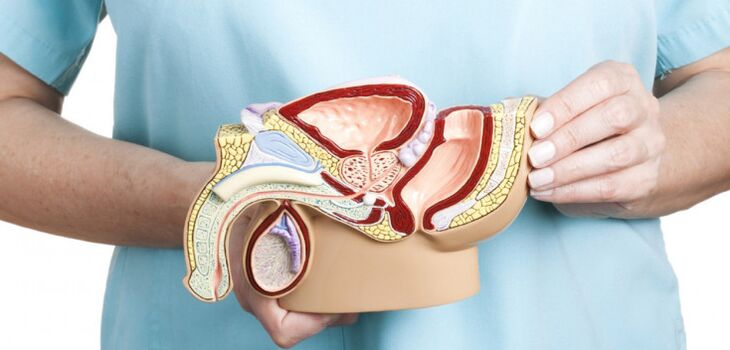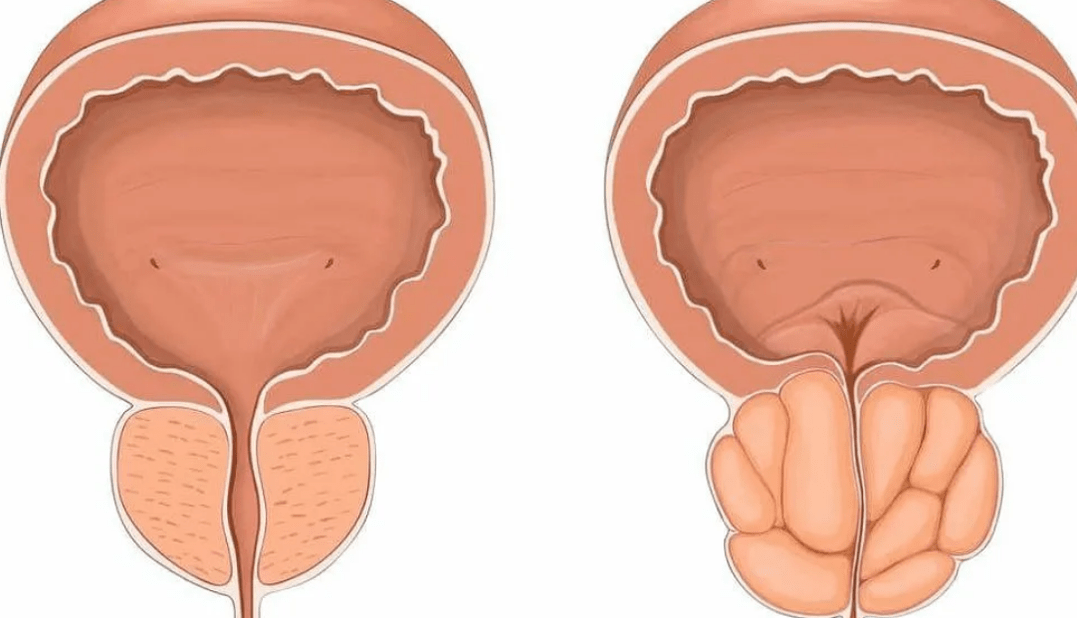
Prostatitis is inflammation of the prostate gland. This is the most common disease in men.
It is believed that, in most cases, the disease of prostatitis is associated with the penetration of infection. However, it is not. In some cases, these diseases are non-communicable in nature.
The main cause of prostatitis is due to the particularity of the prostate anatomy and its blood supply.
Features of prostatitis

The prostate is located in the pelvic area. Its anatomy differs from that of all other human glands. The prostate is made up of several parts, only one of which contains glandular tissue. The glandular tissue of the prostate is made up of many small glands, each with its own excretory duct. These ducts merge together to form the largest duct. There are extensions in both the small and large ducts, the sinuses, where the secret of the prostate builds up - prostatic fluid. Conversely, prostatic fluid is an excellent nutrient medium for bacterial growth, and sinus lining cells are an excellent substrate for the survival of intracellular infections (chlamydia, mycoplasma, ureaplasma, viruses). In addition, the prostate has no major blood vessels of its own and is fed by small blood vessels from eight to ten sources. As a result, the velocity of blood flow in the prostate is initially low, which in turn leads to the development of infectious episodes and the formation of congestive changes in the prostate tissue itself. These conditions largely determine the complexity of structural changes in the prostate and the diversity of clinical forms of prostatitis.
There are various classifications of prostatitis, none of which are completely exhaustive. In summary, there are two main courses of prostatitis: chronic and acute.
acute prostatitisThe difference from chronic is the more vivid syndrome. Its treatment is carried out with heavy doses of antibiotics and in some cases surgery is necessary to remove the prostate abscess.
Symptoms of acute prostatitis
High temperature, severe pain in the perineum, groin, suprapubic bone. Pain when urinating. General poor health. Decreased performance, etc.
In chronic prostatitis, the clinical picture is often vague.There may be no symptoms at all. Very often, problems with sexual performance and intercourse are attributed to general fatigue, psychological stress at work, lack of rest, and as a result, a person simply does not know that he is sick. Therefore, in this case, a preventive examination plays an important role, the purpose of which is to identify incipient inflammation of the prostate.
Symptoms of Chronic Prostatitis
- Pain in the perineum, groin area, above the pubic bone that develops and disappears quickly;
- decreased libido (libido);
- Changes in the duration of coitus (in some cases, rapid ejaculation, in others - a significant prolongation of coitus);
- Changes in the nature of sexual sensations (decreased brightness of orgasm);
- The appearance of a urethral discharge, especially in the morning.
Why is prostatitis dangerous?
In the absence of qualified prostatitis treatment, subsequent violations of sexual function - impotence, impaired ejaculation (especially accelerated ejaculation). Prostatitis can become chronic and lead to urinary stones and infertility.
Prostatitis Treatment
The treatment of prostatitis should be comprehensive and prudent. Treatment includes antibiotic therapy, prostate massage and other measures. Prostate massage, although it can cause some unpleasant sensations, is a necessary procedure. First, the diagnosis requires the study of the secrets of the prostate, and in some cases, massage to relieve congestion of the prostate. This event is usually handled carefully and selectively.
For the treatment of prostatitis, physical therapy, immunomodulatory therapy, and lifestyle modification are widely used.
In modern medicine, physical therapy methods are used almost everywhere to treat and prevent many diseases. Taking into account the many years of experience in the effectiveness of physiotherapy by domestic and foreign doctors, we only use advanced and latest imported equipment for electrotherapy procedures (electrophoresis, pulse and alternating current, electrical stimulation, etc. ), laser therapy of various spectra, ultrasound therapy, magnetictherapy, vacuum therapy.
prevent prostatitis
To prevent prostatitis, it is important to organize your life so that it includes as few risk factors as possible for the development of this disease. It is recommended to establish a balanced diet, limit the intake of spicy and greasy food, do not drink too much, and maintain a stable normal weight. Stay calm and move as much as possible. Regular sex without prolonged abstinence is necessary to maintain a constant circulation of sperm and an active blood supply to the prostate. True, we should not forget that the development of prostatitis is often caused by sexually transmitted infections, so sex life must not only be regular, but also protected. Ideally, every man should have at least one preventive checkup with a urologist every year. First of all, it is necessary to check the secrets of the prostate and conduct an ultrasound examination of the prostate. After 40 years, it is imperative to donate blood as a tumor marker.
Prostatitis is a complex and insidious disease; its treatment is a big problem for physicians all over the world. However, this does not mean that doctors cannot help prostatitis patients. It is not always possible to completely cure the patient, but modern medicine is able to eliminate the symptoms of prostatitis and achieve long-term stable remission. The length of this period depends on the individual patient. If he followed the doctor's advice honestly.
An inflamed prostate is a disease that is easier to avoid than cure. Make some small changes in your life that are useful and necessary to prevent prostatitis, and you won't suffer from this unpleasant complex disease for life.
Be sure to consult a qualified specialist in the field of male disorders at Semeynaya Clinic.

























